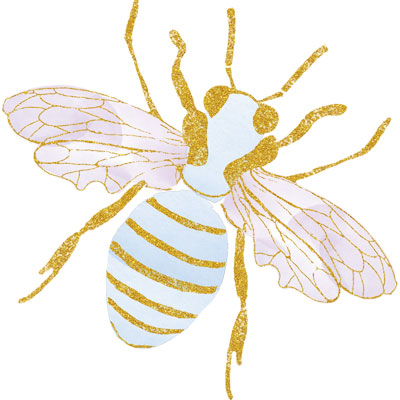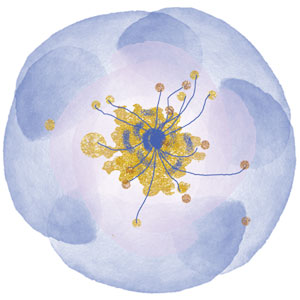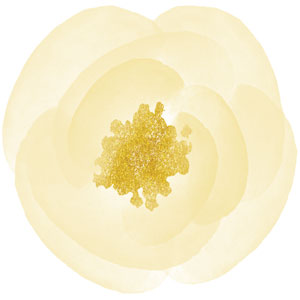The Incredible Work of Bees and Their Keepers
Backyard beekeepers face challenges, but reap sweet rewards
 When it comes to beekeeping, Laura Hetland adheres to the words of American writer and naturalist Henry David Thoreau who said, “The keeping of bees is like the direction of sunbeams.”
When it comes to beekeeping, Laura Hetland adheres to the words of American writer and naturalist Henry David Thoreau who said, “The keeping of bees is like the direction of sunbeams.”
Hetland, an Appleton native, believes the insects are inexplicably linked to the world as we know it and intimately bound to all the earth’s essential functions.
“When you get to play that role as the bees’ keeper or guardian, it’s like you’re protecting the sunshine itself,” she says. “And you’re protecting the flowers that depend on that sunshine and pollination. Beekeeping connects me more to everything in life.”
Hetland first began working with bees when she lived in Hawaii and continues her beekeeping journey back in Appleton through her blog, The Honey Huntress. In Hawaii, Hetland learned how each hive of honey bees has its own distinct personality, usually dictated by its queen’s demeanor. Before entering the hives, Hetland and her beekeeping mentor would spend time in quiet observation of the bees’ subtle movements and flight patterns, searching for clues that would reveal the hive’s needs that day.
“I’m not a religious person, but if I were to claim anything as my religion it would be these bees right here,” Hetland says.
At work, but in danger
For many beekeepers, there is something innately spiritual about the relationship forged between human and hive, and it’s easy to see why. Witnessing the work of bees up close is awe-inspiring.
“You can’t get any closer to nature than with bees,” says Wayne Gerdts, owner of Honey Bee Ware beekeeping supply store in Greenville. “So many customers tell me they go out for hours on end just watching their bees.”
Each bee in a colony has a job to do. The queen’s only job is to lay eggs and perpetuate the hive. She is capable of laying up to 2,000 eggs each day. Male bees, called drones, exist only to mate with the queen. Worker bees, which are all female, do everything else, from foraging for nectar and pollen to cleaning the hive. The average worker bee lives for six weeks during honey production season and will make only 1/12 teaspoon of honey in that time.
Gerard Schubert, president of the East Central Wisconsin Beekeepers Association, sums up the work of bees in three words: fascinating, industrious, beneficial. According to the U.S. Department of Agriculture, bees accomplish roughly 80 percent of insect crop pollination in the country, or about $15 billion in added crop value. Almonds, apples, blueberries, onions and oranges wouldn’t exist without them. Thirty percent of the food we eat depends on the pollination of bees.
For Schubert, beekeeping is as confounding as it is enthralling, but that’s part of its appeal.
“There’s still so much to learn about bees and why they do what they do,” says Schubert, who has been keeping bees at his apiary in Borth for the last six years. He will have 12 hives this year and at maturity each colony will contain 50,000 to 60,000 bees. “For people who like a challenge, this is an ideal hobby.”
Beekeeping today is a challenge because of the numerous threats that exist for bees. North American bee populations are declining at an alarming rate. Larry Cain, co-president of the Fox Valley Beekeepers Association, says habitat loss, pesticides and parasites are just a few of the threats bees face.
“We have harmed their habitat by reducing natural areas. We also have become habituated to the use of pesticides and herbicides,” Cain says. “We as a culture need to make some hard choices in how we proceed, especially in regards to beekeeping.”
A survey by the Bee Informed Partnership reports 50 percent of Wisconsin hives were lost during the 2015-16 season. Wisconsin winters are hard on bees and can exacerbate the negative effects of disease and parasites such as the Varroa mite, which is a major contributor to hive loss.
“This isn’t our grandfather’s world of beekeeping when they could put bees in a box and harvest honey with maybe a 15 percent colony loss over winter,” Schubert says. “Today’s beekeepers must become educated on what’s harming the honey bees and be proactive in helping their managed colonies survive.”
Urban beekeeping
Bee advocates have proposed urban beekeeping, the practice of keeping bees in urban spaces, to help both cities and bees. Urban bees have shown better winter survival rates, possibly because they are gathering nectar and pollen from diverse sources that haven’t been heavily sprayed with pesticides. Residents enjoy more fruitful gardens, and easy access to raw, local honey, as a result.
Communities throughout the Fox Cities are responding to the raising interest in urban beekeeping. Currently Fox Crossing, Grand Chute, Oshkosh, Kimberly, Appleton and Neenah have ordinances that allow the keeping of bees in urban settings.
The City of Appleton’s beekeeping ordinance passed in 2015 and requires prospective beekeepers to pass a one-time inspection with a fee of $145 and to obtain an annual permit for $59. Annual neighborhood approval is also required. All property owners within a 400-foot radius of a proposed hive will be notified and have 14 days to object to a permit. One objection causes a permit to be denied.
Many local beekeepers acknowledge the ordinance is a step in the right direction, but disagree on the yearly neighborhood approval requirement.
“To get a permit, you have to run a gauntlet that often times fails,” says Cain, who elected to keep his hives on his Grand Chute rental property rather than at his Appleton home.
 Currently, Riverview Gardens and Lawrence University hold the only beekeeping permits in Appleton. Cain anticipates Neenah will permit more small-scale beekeepers under its new ordinance, which passed in April, that requires beekeepers to notify only those abutting neighbors with whom they share a lot line.
Currently, Riverview Gardens and Lawrence University hold the only beekeeping permits in Appleton. Cain anticipates Neenah will permit more small-scale beekeepers under its new ordinance, which passed in April, that requires beekeepers to notify only those abutting neighbors with whom they share a lot line.
Gerdts, a third generation beekeeper, says despite “unrealistic” requirements on beekeeping, business at Honey Bee Ware is growing. He says educating the general public on honey bees, which are generally docile, has been crucial.
“We’ve had a steady increase in business for the past several years,” he says. “Ordinances are changing and people are finding out just because there’s a beehive nearby that doesn’t mean you’re going to get stung.”
There are several ways to help bees even if you don’t plan to become a beekeeper. Hetland suggests planting bee-friendly flowers like crocus, bee balm, zinnias and asters. Buy locally-grown, ethically-harvested fruits, vegetables and honey from farmers and beekeepers in the area. Also, skip spraying your yard. Some pesticides are highly toxic to bees. Reducing or eliminating the use of pesticides and herbicides can help avoid harming helpful pollinators.
If you do plan to embark on a beekeeping journey, Hetland says to be prepared for a long-term commitment.
“Once you get stung,” she says, “you’re stung for life.”
Appleton Pollinator Project
With bee populations declining nationwide, Lawrence University Assistant Professor of Biology Israel Del Toro, along with Visiting Professor Relena R. Ribbons and five undergraduate students, launched the Appleton Pollinator Project (B.Y.O.–Beez). The project strives to evaluate and quantify Appleton’s bee biodiversity, then determine how urban green spaces can be used to help save native bee populations.
The project will test several methods. The first is to grow pollinator gardens meant to increase food sources for bees. The second is creating honeycomb-shaped “beehives” meant as shelter for the majority of bees in Wisconsin which are non-hiving, solitary bees that do not sting.
Del Toro and his students, with the help of Appleton City Parks, identified 17 sites where pollinator gardens, hives or both will be deployed in May and June. Sites include Lawrence University, Riverview Gardens, Heckrodt Wetland Reserve, Gordon Bubolz Nature Preserve as well as Tellulah, Pierce, Plamann and Memorial Parks. “The goal is to figure out what combination of treatments increase native pollinator populations the most,” Del Toro says.
Community members will play a large role in data collection, as the project relies on citizens to become the scientists. Once the pollinator gardens and hives are in place, community members can use a smartphone app to take geo-referenced images of bees they see at each site while playing a pollinator themed game. The information gathered through the app will help Del Toro and his students determine which treatments work best for each species of bee, while also providing a learning opportunity.
“This project lends itself well to community and educational engagement,” Del Toro says. “We want people to think more broadly about bees.” For updates, visit byobeez.org.











Leave a Comment